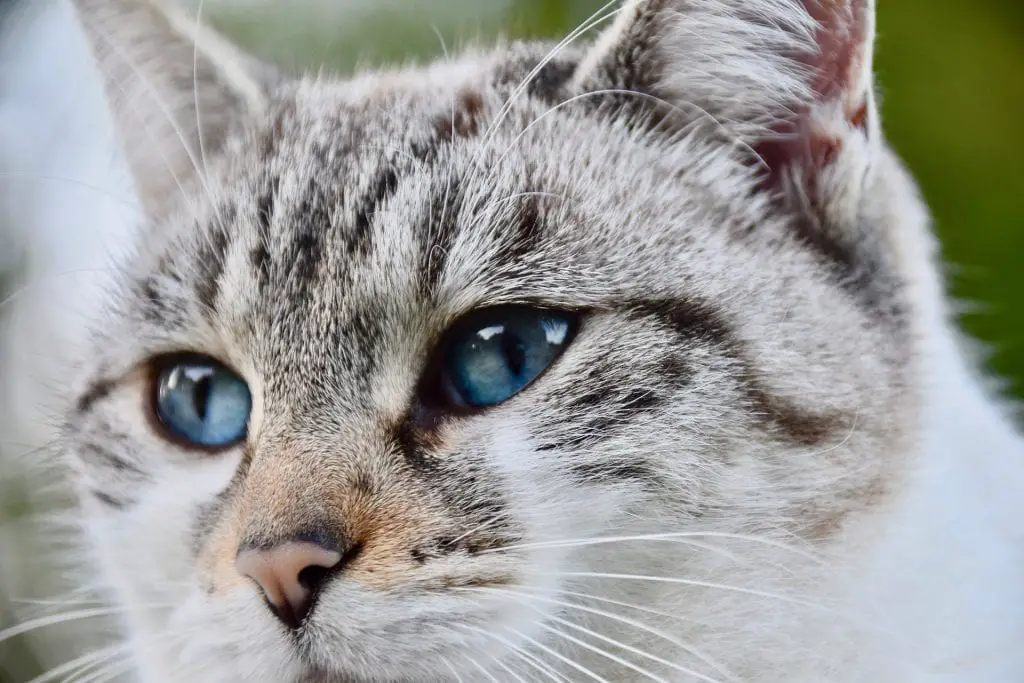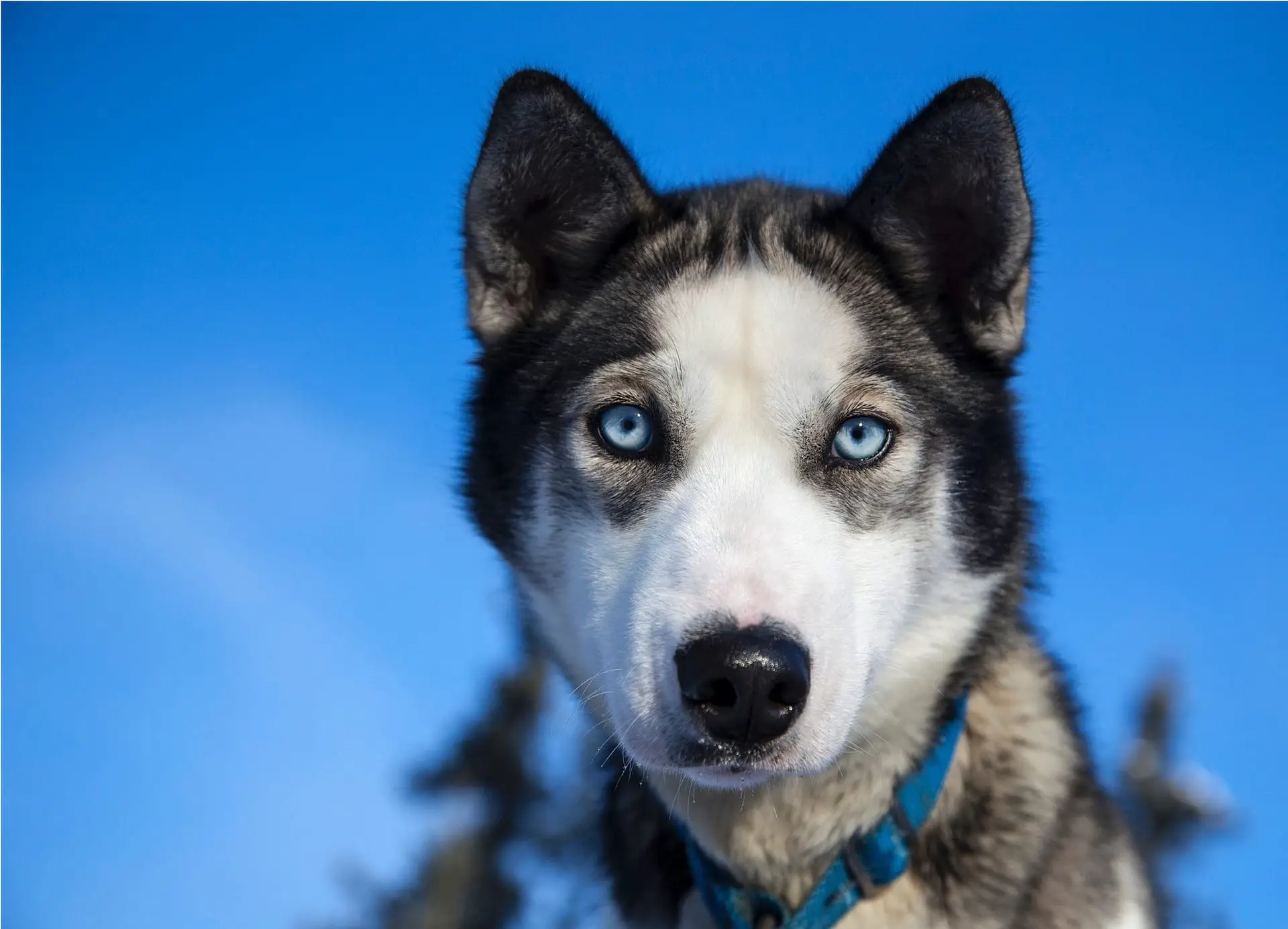Eye color varies in human beings and domestic animals and birds. It remains fixed in wild animals and birds, even across species. By eye color, we mean that part of the eye called the iris, surrounding the pupil. You will find different human beings with an extensive range of eye colors. The same is true for dogs, cats, horses, and even goats. How and why this happened in the process of evolution isn’t known. When it took place, isn’t known either. The norm in the color of the eyes is black or brown. Other shades are rare, especially in animals. Quadrupeds like horses, cows, goats, and the like, will usually manifest brown eyes. You won’t see blue-eyed giraffes or a blue-eyed lion in the wild either.
Eye color in humans and domestic animals is determined by the amount of melanin in the eye. The lower the level of melanin, the higher the chances of blue eyes are. In wild animals, eye color is species-specific and only alters when members of a certain sub-species have undergone a genetic mutation of some kind. Some animal species have pretty regular color eyes by default. You may not see blue-eyed giraffes. Giraffes have brown eyes. Blue eyes in certain animals appear very appealing and these are much sought-after as pets, if they can be cared for as domestic animals. Some animals have blue eyes due to the way in which light enters the eye and exits it. This is also the result of genetic a mechanism.
Blue-eyed animals and birds that are intriguing to behold
Blue-eyed husky
Blue-eyed dogs have the most attractive and eye-catching faces around. This is very true for furry blue-eyed huskies. For years, scientists have felt that blue eyes in dogs are related to the dog’s coat color. Researchers have discovered that dogs with splotches on their coats usually have blue eyes.
The Siberian husky, though, has one of the most piercing pair of blue eyes you’ll ever find in an animal or bird. These look unusually breathtaking. Experts found that a genetic mutation caused this. They discovered a mutation near a specific gene was responsible.
The study states that the mutation of a gene produced an amount of decreased pigment production in the eye. The eye appears blue due to a lack of pigment. There’s no actual blue pigment. It’s about how the light enters the eye. This creates the appearance of blue. It’s the same way the sky seems to look blue but space does not.
Several dog breeds, including Old English sheepdogs and border collies have blue eyes. In these breeds, the trait is an inherited recessive trait. What this means is that two mutated copies of the gene are needed for the blue eyes to take shape.
Whooping Crane
A Whooping crane’s chicks have blue eyes at birth. As the chick matures into an adult crane, this color will turn to a yellowish gold. Siberian crane chicks are also born with blue eyes. Eye color in both these sub-species of cranes changes when the birds turn six months of age.
Blue-eyed Cockatoo
The Blue-eyed Cockatoo is among a vulnerable species of birds whose habitat is threatened. It is quite a large white bird, belonging to the parrot family. Its actual eye color isn’t blue. It is given this name due to a rim of bright blue skin that it has around its eyes. The bird’s real eye color is either black or brown. These birds, when reared as pets, are demanding and tend to mimic their owner’s speech.
Blue-eyed Cats

There is a common misconception that all blue-eyed cats are deaf. First, the eye color blue is quite rare in cats these days. The most common color of cats’ eyes is yellow or green. Cats that do exhibit the eye color blue, are breeds of Himalayan, Balinese, Persian, Siamese, and Javanese cats. Some Ragdolls manifest blue eyes too. A rare cat breed, Ojos Azules, is a dark-colored cat with blue eyes.
In the case of white cats, the story may be quite different. White cats with blue eyes get their coloring from a genetic mutation in a gene called “Kit”. The irises of these cats have lesser amounts the cell tissue called melanocyte. Melanocytes are responsible for pigmentation in cats. They also play a role in the functioning of the inner ear. Due to a decreased amount of these cells, white cats with blue eyes may not have enough for hearing properly. These traits resemble albinism in humans, so these cats have some vulnerabilities, such as UV light sensitivity. It is estimated that forty percent of white cats with blue eyes are deaf. When a kitten is born with blue eyes, they may not remain that way. As the kitten matures, eye color may change at about 6 or 7 weeks of age.
Blue-eyed Ground Dove
Very different in the color of its plumage from the classic white dove, this bird is endemic to Brazil. Its sub-tropical grassland habitat in the Cerrado region is threatened by loss. Experts believed this bird was extinct, since none had been recorded in the wild since 1941. In June 2015, twelve of the blue-eyed birds were seen by ornithologist Rafael Bessa in Brazil’s Minas Gerais state. He was surprised by a bird call that he had never heard before. As he couldn’t see any birds in the vicinity, he recorded the song and played it to draw any birds out. The trick worked, and birds that the ornithologist had never seen before flew into his view. Bessa was intrigued to see small tawny-colored birds with the bluest sapphire eyes. Remarkably, these birds have sapphire-blue spots in a cluster on their wings too.
Blue-eyed Black Lemur
The Blue-eyed Black Lemur is one of the most threatened primate species in the world. Their status is that of “critically endangered” as there are only five females of breeding age of the species left in North America. Males are completely black, while females vary from different brown shades to gray. Both males and females have blue eyes. They are originally from Madagascar, but are severely threatened by poaching and hunting in their original habitat. There is also a huge threat from deforestation in their home country of Madagascar.
Blue-eyed Quadrupeds
Four-legged animals like horses and llamas/alpacas have blue eyes too. It was thought that horses with blue eyes had some kind of ocular disease and may consequently have had a problem with their eyesight. Research has discovered that this was an untrue assumption. White llamas and alpacas are known to have blue eyes. Like cats, these animals are often deaf, though twenty percent have hearing ability. This does not, as is a popular myth, hamper their functioning because they take their cues from other alpacas in the herd. Another quadruped with blue eyes, a wild one, is the majestic Bengal Tiger. It is white with black or dark brown stripes. Most tiger cubs are born with their eyes shut. After around ten days, when their eyes open, they are blue. Tigers, other than the Bengal white, lose this eye coloring as they age.
Mutations
Eye color is determined by genetics in animals, just as it is in human beings. The basis of any variation from the norm is likely due to a mutation in dominant genes passed down from parents. In some animal species, this is reflective of a recessive gene holding sway, and other senses, such as hearing or sight, may be affected too. Nevertheless, blue-eyed animals and birds are a breathtaking sight to behold and lovely to have as pets. Beware of many images on the internet showing pictures of blue-eyed giraffes and snowy owls. These are not authentic.



